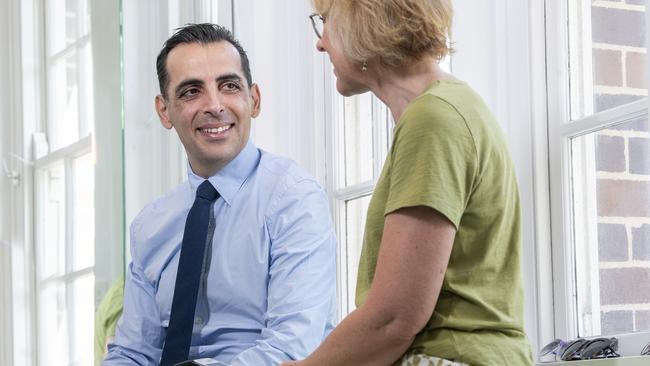How artificial intelligence is helping to ease Australia’s healthcare worker shortage
Artificial Intelligence is strengthening the eyes and hears of doctors as Australia’s healthcare sectors battles a chronic labour shortage.

Doctors, nurses and other health professionals are turning to AI and automation to help combat a labour shortage that is plaguing the sector, pushing the boundaries of the emerging technology.
AI has created an arms race across the creative industries after the launch of Microsoft-backed ChatGPT sent Google scrambling to introduce its rival chatbot, dubbed Bard, while Rolling Stone is trialling the technology to write news articles.
But can it also help treat and cure the sick as well as generate essays, songs, staff notes from chief executives and more? Robots looking after humans sounds like the stuff of science fiction. However, it has become a reality.
Hearing implant producer Cochlear has struck a partnership with Google and audiologists to use AI to help people hear again, using machine learning similarly to film director Peter Jackson’s sound restoration for his documentary The Beatles: Get Back.
But it is also being used as a day-to-day tool across the broader healthcare sector. While most of the technology is being deployed to free staff up from mundane administrative tasks – such as booking appointments – it is also being used as a diagnostic tool.
CommBank Health chief executive Albert Naffah said doctors were adopting AI in telehealth consultations to glean greater insights than they can by simply listening or observing a patient via a phone or screen.
“It’s not just the doctor’s eyes and ears through the screen that are doing the diagnosis but it’s the machine learning in the background that’s able to notice changes in the appearance, in voice, diagnose a cough, for example, to have that augmented experience between the clinician and the patient,” Mr Naffah said.
CommBank’s GP Insights report for 2023 found that about 80 per cent of general practices in Australia are finding it difficult to recruit suitable GPs, as well as nurses (74 per cent), specialist doctors (62 per cent) and practice managers (56 per cent).
Mr Naffah said service providers were speeding up their adoption of digital solutions in a desperate effort to meet a surge in patient demand and a lack of staff.
“The healthcare skills shortage, and its impacts on both workers and the overall sector, present major challenges in Australia,” he said.
“From a practitioner’s perspective, the skills shortage means there are fewer staff to provide care to patients. But there is light on the horizon. General practices are investing more in digital solutions and the automation of time-consuming administrative tasks, digital check-in and streamlining of bookings, payments and claims is freeing up valuable time for practitioners to focus on patients.”
The use and rise of telehealth consultations is controversial. While the technology has allowed doctors to treat patients anywhere with a reliable telecommunication connection, it has also fuelled fears that patient care is being compromised.
The Medical Board of Australia has moved to contain a pandemic-fuelled explosion of telehealth care, which it says “should not be considered as a substitute for face-to-face consultations”.
Under the proposed new guidelines, which are based on recommendations drafted a decade ago, doctors are warned not to prescribe medication to first-time telehealth patients.
But key players in Australia’s $2bn digital healthcare sector fear proposed changes to telehealth and other technology-based doctor consultations will restrict access to timely treatment.
It comes as the pandemic has already stretched an overburdened workforce in the healthcare sector. Even before Covid-19 struck three years ago, a federal government report forecast that Australia needed an extra 85,000 nurses by 2025.
Meanwhile, private hospital operators were tapping into skilled migration to bolster staff numbers and companies such as Healthscope were introducing programs aimed at freeing nurses up from paperwork and other administrative tasks so they could spend more time with patients.
Such is the severity of the healthcare staff crisis that a small regional town in Western Australia – Quairading, 164km east of Perth – offered $1m and a rent-free home to a doctor willing to fill their GP vacancy earlier this year.
CBA is attempting to muscle in on the health insurance claims market, launching a new app-linked device earlier this year that it hopes will make card terminals obsolete.
The move is a fresh shot in CBA’s ambition to topple National Australia Bank as the country’s largest business lender. NAB’s Health Industry Claims and Payments Service – or HICAPS – has dominated the health sector for decades.
But NAB’s grip has been loosening as it faces competition from Tyro Payments, while last October CBA won a lucrative contract to build a new claims-at-point-of-support channel for the NDIS.




To join the conversation, please log in. Don't have an account? Register
Join the conversation, you are commenting as Logout